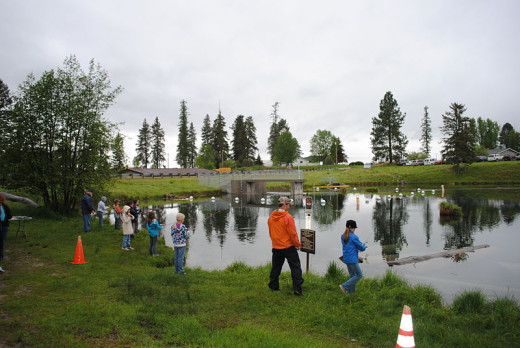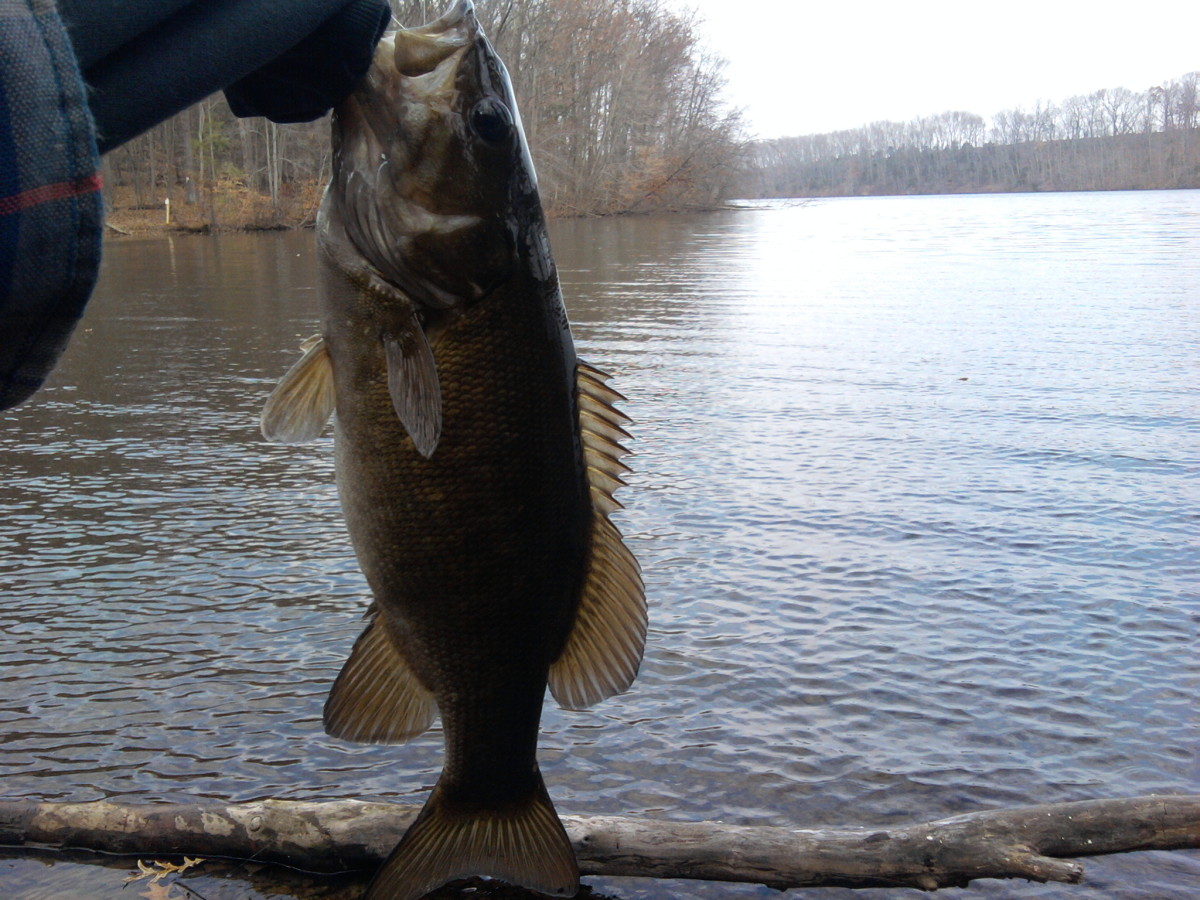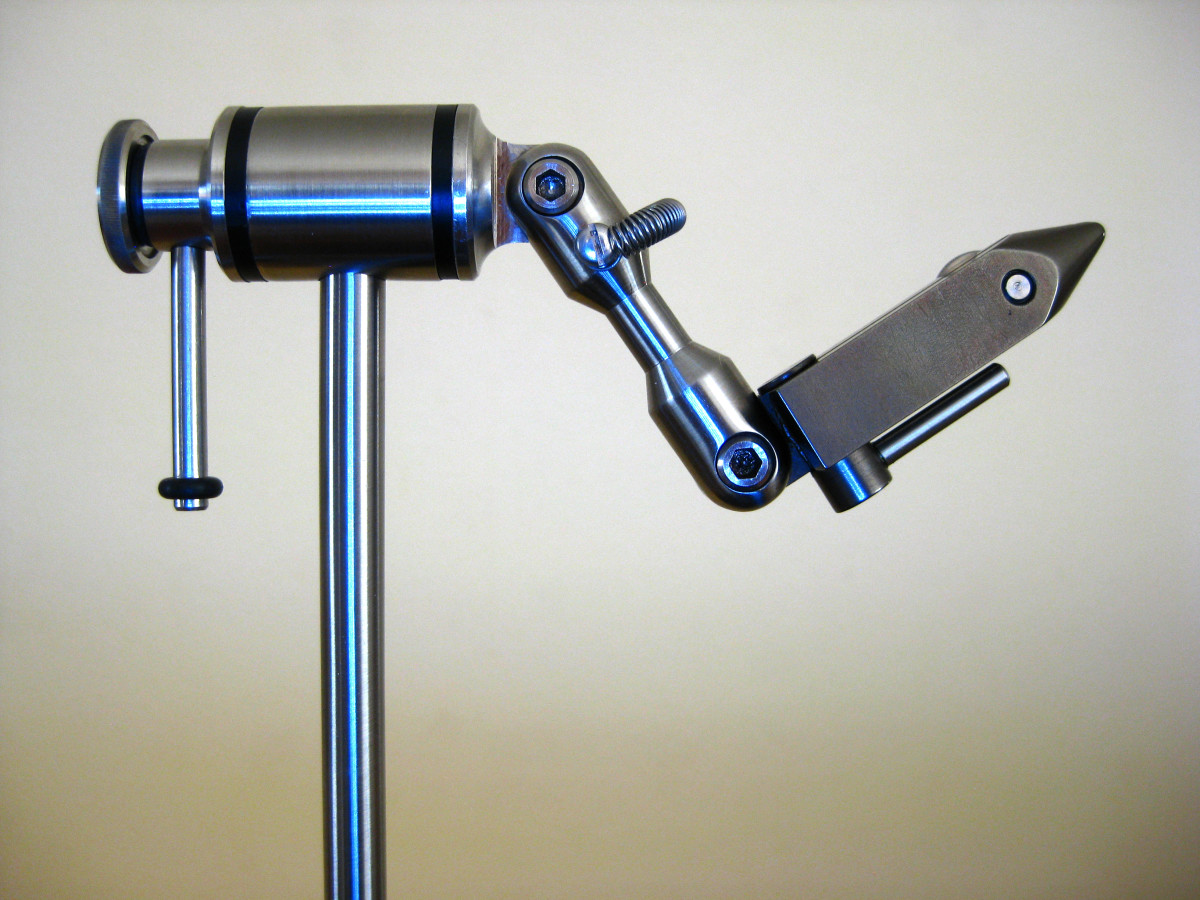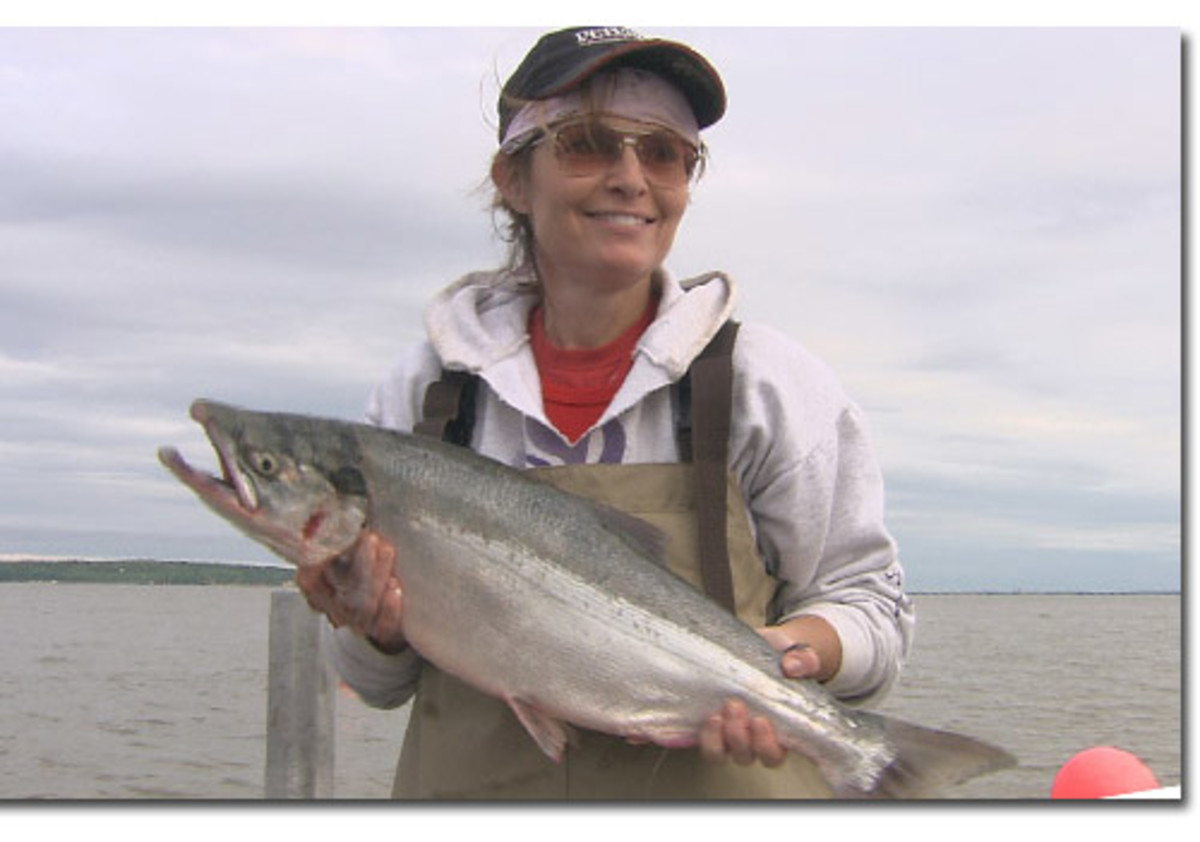How to Fish from Riverbanks Instead of a Boat
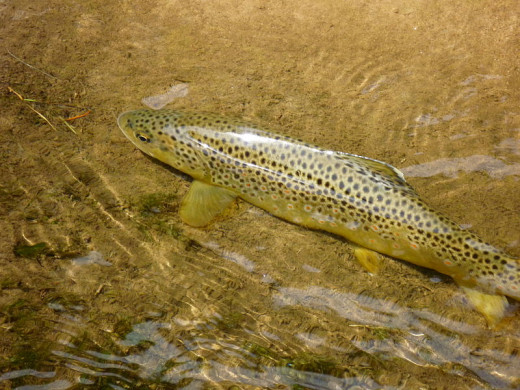
A Rewarding Alternative to Fishing from a Boat
Taking your boat out on the lake or river and heading out to your favorite fishing spot is a great way to take advantage of some fantastic fishing opportunities.
Fishing from a boat gives you the ability to get to your destination and to move to different locations as needed quickly and efficiently.
Unfortunately not everyone has the resources to own or rent a boat. Using a boat can also take additional time to prepare and transport the boat. If you choose to use a boat it will also need to be cleaned up after fishing.
There are some wonderful fishing opportunities available even if you're not using a boat if you know where to look.
Fishing from the bank of a river or stream may be a rewarding alternative. River and stream fishing gives you the opportunity to take your fishing skills to the fish unlike fishing from the bank of a lake shore waiting for the fish to come to you.
Fishing from the bank of a river also gives you a chance to experience nature in a way that can't be done from a boat. You will have the opportunity to see wildlife up close and experience sights, sounds and smells that otherwise would be missed if you were to fish from a boat.
Learning to Read
Although there are many types of fish that live in streams and rivers, fish generally will be found in locations where the food will come to them.
No matter what type of fish you are fishing for, or the method of fishing you use, the key to success is learning to read the river or stream.
The Real Challenge to Fishing Streams or Rivers
If you are fishing in a river that as been recently stalked, fishing is quite easy and not much different than fishing from a boat or the shore of a lake.
The challenge and the real fun of river and stream fishing begins when you start fishing for holdover or wild fish often referred to as natives. These fish are much harder to catch and will require some real fishing skills.
These wild or holdover fish found in cold mountain water can be some of the best tasting fish you will ever have the opportunity to try.
For information on how to prepare your catch click here.
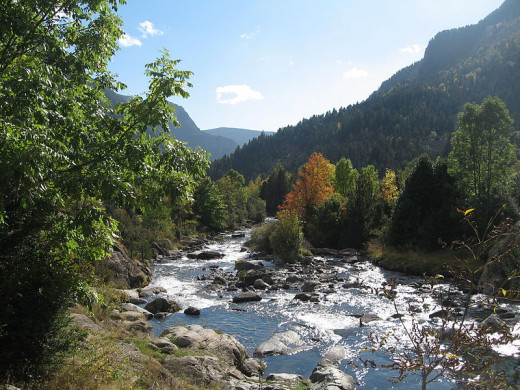
Stream or River Fishing in the Southwest
While there are some excellent opportunities to catch many different varieties of fish in rivers and streams such as catfish, bass, or salmon. Here in the Southwestern United States, river or stream fishing usually means trout fishing.
Fishing for wild or holdover trout takes skill if you are to be successful on a consistent basis.
The image above shows a great example of a trout fishing stream. Trout like cold, highly oxygenated water in order to thrive.
If the water temperature rises you will find the trout in areas that have more oxygen such as riffles and places where the elevation of the river drops quickly. If the water is very cold, you will generally find the trout in calmer water.
Within the rivers and streams of the Western United States, there are four main species of trout, Brook Trout, Brown Trout, Cutthroat Trout and Rainbow Trout.
The most common species of trout stocked in the waters of Western United States are the Rainbow Trout.
Rules for Successful Stream or River Fishing
- Before fishing, make sure you know the rules and regulations for the location you are planning to fish. Many locations have regulations concerning the tackle or bait you are allowed to use. If you wish to keep some fish for eating, most waterways limit the number of fish you may have in your possession.
- Know what kind of fish you will be going after prior to fishing. Each type of fish has specialized tackle requirements. Although you may catch some fish with "generic" tackle, you will be much more successful if you come prepared.
- The general rule is to walk upstream while fishing. Cast upstream and let the bait (flies, lures, etc.) float naturally downstream. Keep the line somewhat slack so it continues to float down the river or stream naturally. This will require you to be very aware of what's happening at the end of the line. Watch for any changes so that you can be prepared for when the fish strikes.
- If you can see the fish there's a good chance that the fish has already seen you. Don't try to see the fish you are trying to catch. Learn to anticipate where they are and fish those locations from a position that you can't be seen by the fish for the best results. Fish can see much better than you might think.
- When fishing rivers and streams, fish that are in close proximity can easily feel your footsteps. Don't get too close to the shore where you want to fish. Not only can the fish see you but they can also "hear" you with the lateral line that extends down the side of their body. Keep very quiet and don't make a sound and take very soft steps.
- I don't know if it's just coincidence, superstition or fact but I find I don't do well if I wear blue. You may wish to wear camouflage clothing when fishing in a river or stream.
- Be aware of any reflections you are making on the water. It's a good idea to keep down or crawl when approaching a stream bank.
- You want your bait to float by the fish as natural as possible. Watch out for line drag or situations where the baits starts to look unnatural. This will often require that you have more slack in the line than normal so you will want to be very observant for any type of strike and be ready to react.
- Match your line size with the size of fish you expect to catch. Fish can see very well. You don't want to use a line size that is any thicker than is needed. Don't forget to properly set our drag, you may get something bigger than you expect.
- Learn to watch for "the hatch". Insects will often hatch during certain times of the year. When hatches occur, fish often go into feeding frenzies and will not take other forms of food. If you are aware of what the fish are feeding on you will increase your chances considerably.
- Tie proper knots. This is a lesson that is often learned too late. Don't get lazy and tie a poor knot. You never know when you're going to catch the next "big one" and you will need all the line strength you can get.
- Come prepared with the proper tackle. Make sure you have good fresh line of the proper size. Check to make sure all your hooks are sharp. Have a good variety of spoons, spinners, flies and baits on hand so you can be ready for anything.
- Don't leave trash behind. While this doesn't actually affect your fishing, it does affect the experience of those fishermen behind you and can affect the health and well being of the wildlife in the area.
Rocks and Boulders
Large rocks and boulders provide a resting place for trout in fast moving currents. Look for trout just behind these rocks and boulders.
Don't be surprised when you catch a large fish in these locations. The currents will create an additional challenge for you as you fight the fish.
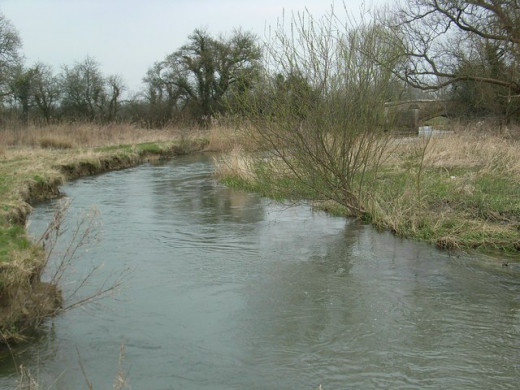
Undercuts
Undercuts in the bank of a river or stream can also be a great place to find a trout. These areas where the river removes soil from under the bank of a stream or river provide the perfect hiding places for fish where they can dart out and grab a tasty morsel as it passes by.
Look for undercuts on the outside edge of where the stream bends and area where the waterway has been obstructed.
Dams & Pools
Dams or locations where the stream or river slows are places that the inexperienced fisherman often will frequent.
These locations have the potential to be great fishing spots however if the stream or river is heavily fished, it is unlikely that you will catch any record trout here.
On the other hand, you may want to spend a little time exploring the spot, you never know what you will find.
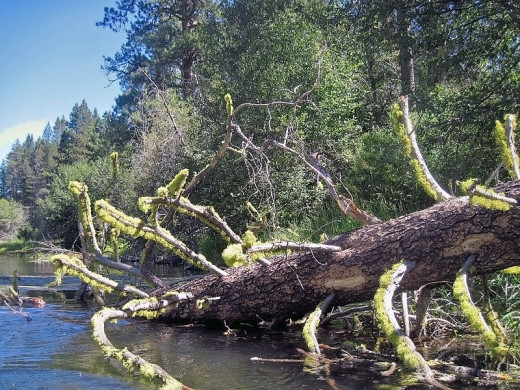
Tree Roots & Branches
Tree roots and branches provide a perfect hiding place for fish. Don't try to fish directly into the roots because you will likely tangle your line.
Use the natural current of the river or stream to float your bait naturally as close to the roots as possible.
Small Waterfalls or Cascades
Small waterfalls or cascades can prove to provide some fantastic fishing opportunities.
As the stream drops and swirls around, the water is oxygenated and pockets of calm water are hidden beneath the raging water.
These resting places give trout a place to easily capture food as it falls and swirls around.
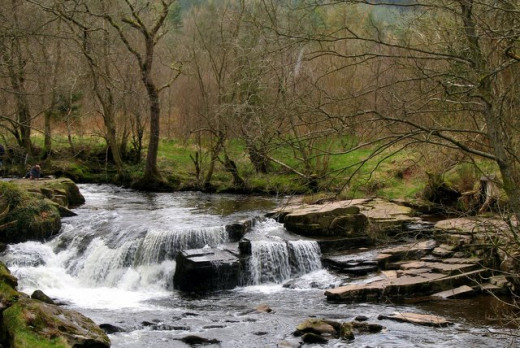
Tips When Fishing Heavily Fished Streams or Rivers
Rivers and streams that are heavily fished can present some additional challenges. The fish in these locations have seen the best and the worst fishermen and can be very difficult to catch.
Often I watch inexperienced fishermen spend time trying to catch a fish they can see in the water. If you can see the fish, they can see you and they are very unlikely to take your bait especially if the river or stream is heavily fished and they have been presented bait, lures or flies in the past.
In a heavily fished river or stream, the most obvious places to look for fish are usually over fished. Look for the places that the average fisherman wouldn't look. I once caught a nice trout about 15 feet away from the stream I was fishing where there was an 8 inch hole in the ground that was made from a beaver.
Very tiny streams that lead into the river and stream can surprise you with some very nice fish. Some of these streams that look like a fish couldn't even swim up them undercut the banks and are actually larger than they appear.
These locations provide prime hiding and feeding locations for trout and are often overlooked by the average fisherman.
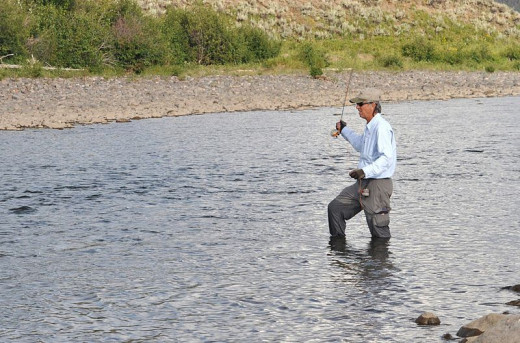
Your Equipment
When fishing rivers or streams, take in consideration the size of the fish you expect to catch and the terrain you expect to encounter.
In most cases you will want to have a rod that is smaller than you usually fish with so that you can easily cast in thick brushy areas.
Waders are not required but can be a great help in getting into difficult to reach areas.
Be sure to have a wide variety of lures, baits and flies available. You never know quite what you will encounter when you get there.
Make sure all of your equipment is in good working order. Inspect your fishing rod for any damage. Make sure your reel is performing properly and that it's clean and lubed properly. Make sure your drag is set to work well with the line that you have in the reel.
Sharpen the hooks on all your flies and lures. Make sure that the hooks are all attached properly and do any repairs that might be needed.
A Bad Day Fishing is Better Than a Good Day at Work
Above all, enjoy your time with nature, family and friends. Fishing provides an opportunity to really get up close to nature (sometimes a little too close).
I often use my experiences stream fishing as a kind of relaxation therapy when I get a little too stressed.
When feeling stressed, stop for a moment, close your eyes and think of one of your favorite time stream fishing.
Remember the sights, sounds and smells and soon you will be relaxed and ready to take on the day.
